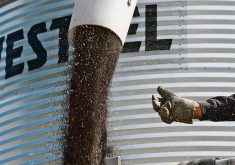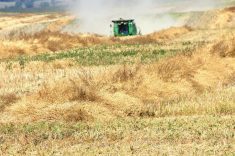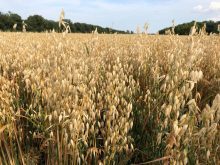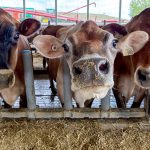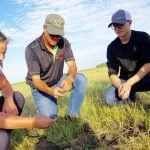LINDELL BEACH, B.C. – Would increasing the size of seed also increase the yield of a plant?
This is one of the tantalizing questions scientists are trying to answer now that they have uncovered a gene responsible for controlling the size of seeds.
The research was conducted by scientists from the John Innes Centre in Norwich, United Kingdom, and the University of Freiburg in Germany.
According to a news release in ScienceDaily, the discovery could lead to crop improvements and greater food security.
Read Also

Farm Credit Canada partners with major Toronto innovation hub
A FCC parntership with MaRS Discovery District aims to solve technology problems in food supply chains.
The results of the study were published in the Proceedings of the National Academy of Sciences.
Scientist Michael Lenhard and his team from the JIC have found that the gene that controls seed size works at the base of the growing seed, producing a growth signal that fixes the final size.
The model plant used in the study was Arabidopsis thaliana, also known as mouse ear cress or thale cress, an annual herb in the mustard family.
The cytochrome P450 KLUH (KLU) gene stimulates cell proliferation, which determines the growth of the seed coat and the seed. The seed growth gene is apparently widespread in plants.
“Very closely related genes are found in the genomes of moss, Physcomitrella, and of essentially all higher plants with a sequenced genome, corn, rice, grapevine, suggesting that the gene is widely conserved,” Lenhard said in an e-mail interview.
“The function of these genes has only been characterized in rice, where the KLUH-related gene appears to fulfil a very similar role in promoting growth, as it does in Arabidopsis.”
Researchers still don’t know what triggers the growth signal that determines the final seed size, but Lenhard said the gene’s activity level could be manipulated and turned on more highly than normal by fusing it with another growth promoter or “inserting additional copies of the gene into the genome.”
However, he said this could increase the size of the entire plant and not just the seeds.
“Historically, seed/grain size has increased dramatically during domestication and probably also during early modern breeding, and this almost certainly contributed to the increases in yield,” Lenhard said.
“In current crops, an increased seed size is often seen to be offset by a reduced number of seeds developing per plant so that overall yields per plant stay the same.
“On balance, increasing seed size in modern crops is most likely only one of several steps required to increase (plant) yields.”
According to the research, a slight problem with fertilization of the ovules by the pollen appears to lead to a reduction in the number of seeds developing in each fruit.
“These negative effects are probably because the presumed signal is mobile, so the altered growth is not only restricted to the seed precursors themselves but is also in neighbouring tissues,” he said.
“One way we hope to get around this is to identify components that act within the cells to perceive the signal and respond to it. Increasing the activity of one of these components in the seed precursors should have a more limited effect, causing only them to overgrow without affecting the other tissues of the developing fruit.”
Increased seed size is particularly beneficial when the agricultural product is contained in the seed, such as canola oil. That’s because the thickness of the seed coat doesn’t increase along with the seed size, resulting in more interior volume.



